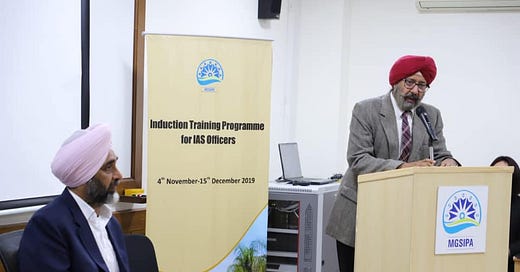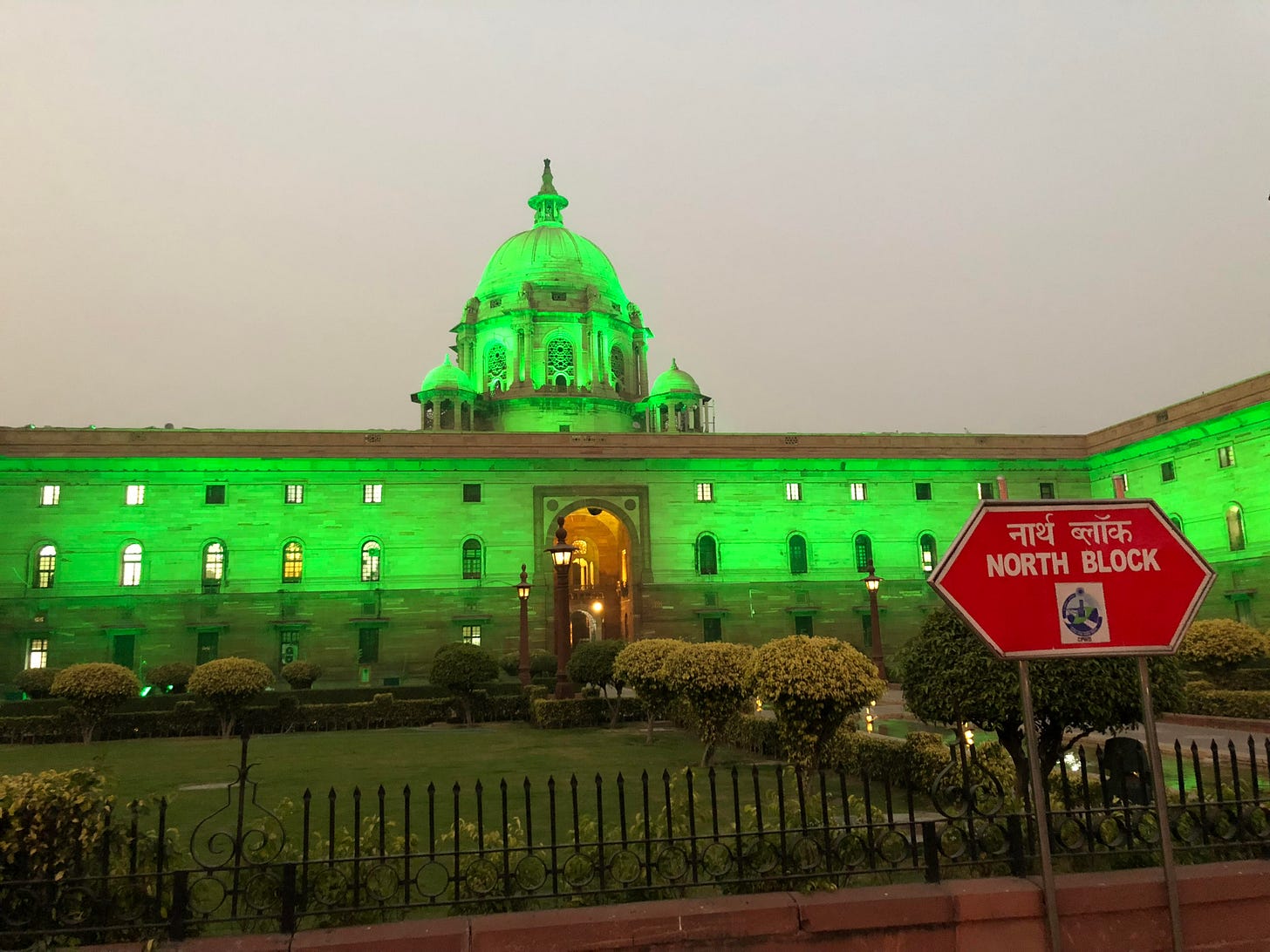India's Quest: Low Inflation & Fiscal Deficit and High-growth Trajectory.
Search for the Holy Grail: The 4-4-8 triad of low fiscal deficits, low inflation and high economic growth.
Fiscal Insights: Beyond the Surface - A Deeper Look at India's Economic Landscape
In a recent article titled "Fiscal Discipline: How India can tide over the global crises," our Punjab cadre IAS colleagues, Karan A Singh and Anirudh Tewari discuss India's fiscal outlook amidst global economic challenges1. While their analysis provides a valuable perspective, it's imperative to scrutinize the nuances beyond the surface. Let's delve into some essential dimensions that warrant further consideration.
1. Beyond Debt-GDP Ratio: A Comprehensive Indicator
The authors' assertion regarding the adequacy of the debt-GDP ratio for cross-country comparisons warrants reflection. However, we respectfully differ in opinion. While this ratio offers a glimpse, the intricate interplay of a nation's distinctive parameters cannot be overlooked. Considerations such as interest rates, inflation, growth rates, debt tenure, and currency denomination intricately mold a country's debt landscape. A comprehensive assessment of these factors is imperative to attain a nuanced comprehension of debt sustainability. Relying solely on one statistic may obscure even the dominant aspects, let alone the entirety of the panorama.
2. The Limits of FRBM Acts
Singh and Tewari rightfully bring attention to the Fiscal Responsibility and Budget Management (FRBM) Act as a pivotal tool for fostering fiscal discipline. Yet, we must exercise caution in our reliance on such acts. While undeniably influential, they are not impervious to change. These acts, designed with defined limits, can be altered during extraordinary circumstances, or sometimes even under less exceptional conditions. They could be superseded by the legislative might of Finance Bills, which upon passage acquire the stature of overarching laws. It's vital to recognize that upholding fiscal prudence requires more than the mere presence of such statutes.
3. Inflation's Dual Edge
The authors seem to overlook a thought-provoking aspect of inflation. While higher inflation does indeed erode consumer purchasing power, it holds the paradoxical potential to alleviate the government's debt servicing obligations. This nuanced interplay between economic variables highlights the intricate nature of their relationships, occasionally challenging conventional expectations.
4. Historical Debt and Governance Challenges
A significant concern the authors highlight revolves around historical debt and governance complexities. However, a concrete solution is notably absent. It's imperative to emphasize that managing debt requires either augmented revenue, which could involve heightened taxation, or a stringent reduction of extravagant spending. The latter demand political determination, particularly when confronting sensitive aspects like employee compensation, pensions, and subsidies. Moreover, the assertion that states can indiscriminately borrow is contradicted by the fact that the Central Government actively dictates borrowing limits on an annual basis, as per Constitutional stipulations.
5. Unravelling Contingent Liabilities
Singh and Tewari's oversight lies in neglecting the often-unexplored realm of contingent liabilities. The commitments made by State Governments to back loans extended to their boards and corporations in commercial banks represent latent financial obligations. The realization of these commitments could significantly disrupt the broader fiscal landscape, underscoring the urgency of comprehensive liability assessment. This aspect is rarely divulged in public discourse, in contrast to the direct debt incurred by state governments through RBI-mandated auctions of SLR securities from Scheduled Banks, which at least has regulatory oversight. A nationwide dialogue is warranted to address this concern, including establishing a ceiling for contingent liabilities per state, to ensure fiscal prudence.
6. Long-Term Projections: A Prudent Approach
The authors' proposal for an extended fiscal consolidation strategy beckons a closer examination. The track record of unmet predictions and expenditure overshoots naturally gives rise to doubts. Their sagacious caution against overindulgent optimism roots us firmly in the realm of practicality. When contemplating projections extending to 2030, the parameters could potentially pose even more formidable obstacles than those we currently envisage. This very uncertainty was perhaps what led the distinguished economist John Maynard Keynes to famously state, "In the long run, we are all dead."
Navigating India's Fiscal Maze: A Call for Pragmatism
In dissecting Singh and Tewari's proposition for a prolonged fiscal consolidation, it becomes evident that such trajectories have historically faltered due to intricate internal and external variables. While they advocate for a steady course, a bolder audacious might be the remedy that India's fiscal framework requires. The malaise gripping certain states is so deeply entrenched that conventional solutions might prove inadequate. It is the opportune moment to contemplate a radical reform—an endeavor that crisis often prompts. Instead of waiting for the emergency to unfold, a proactive, strategic surgical intervention could realign the fiscal landscape and inoculate against potential upheavals.
Crisis as Catalyst: A Call to Action
In summation, while acknowledging the valuable insights from Singh and Tewari, it's evident that the quest for fiscal equilibrium in India mandates a politically more courageous narrative. This narrative embraces the principle that a crisis, rather than a calamity, can serve as the catalyst for transformative change. The recognition of the need for profound surgery, not just superficial remedies, stands paramount. By taking the reins now, in a calculated and strategic manner, India can harness the energy of the current moment to drive visionary reforms, avoiding the urgency of a crisis-triggered overhaul. As the saying goes, "Fortune favours the bold," and in the domain of fiscal reform, seizing this boldness could prove to be the pivotal stroke that shapes India's economic future.
Let’s be bold, neither timid nor reckless—for the latter two options are a recipe for disaster, and the former, a pathway to a prosperous fiscal future.
https://etgovernment.com/s/b0qznws






